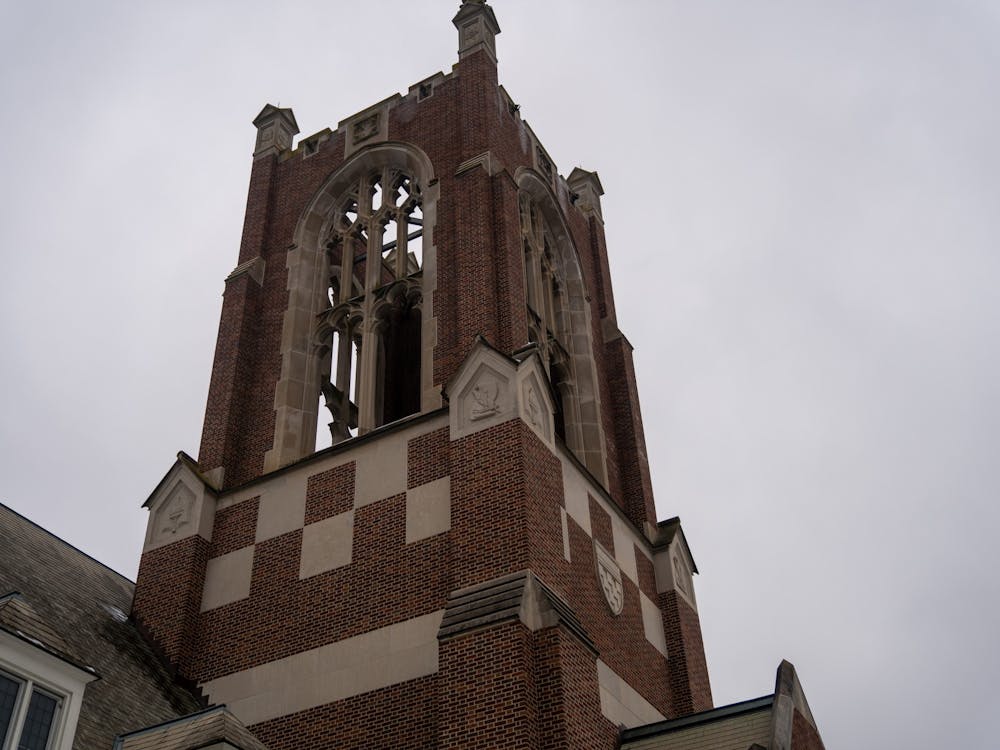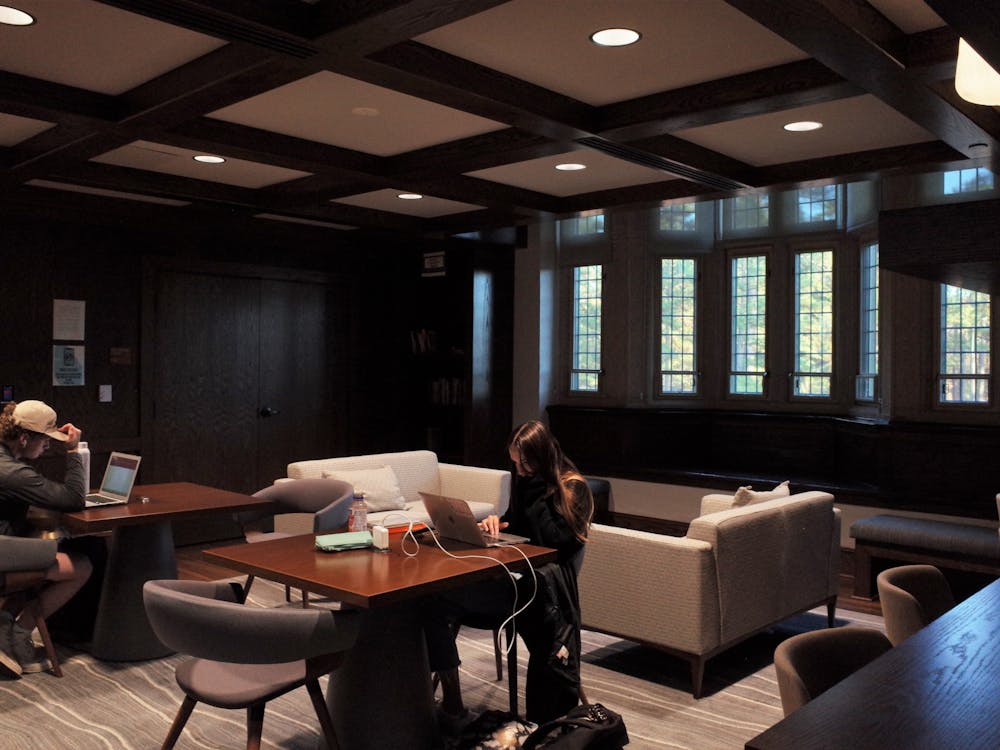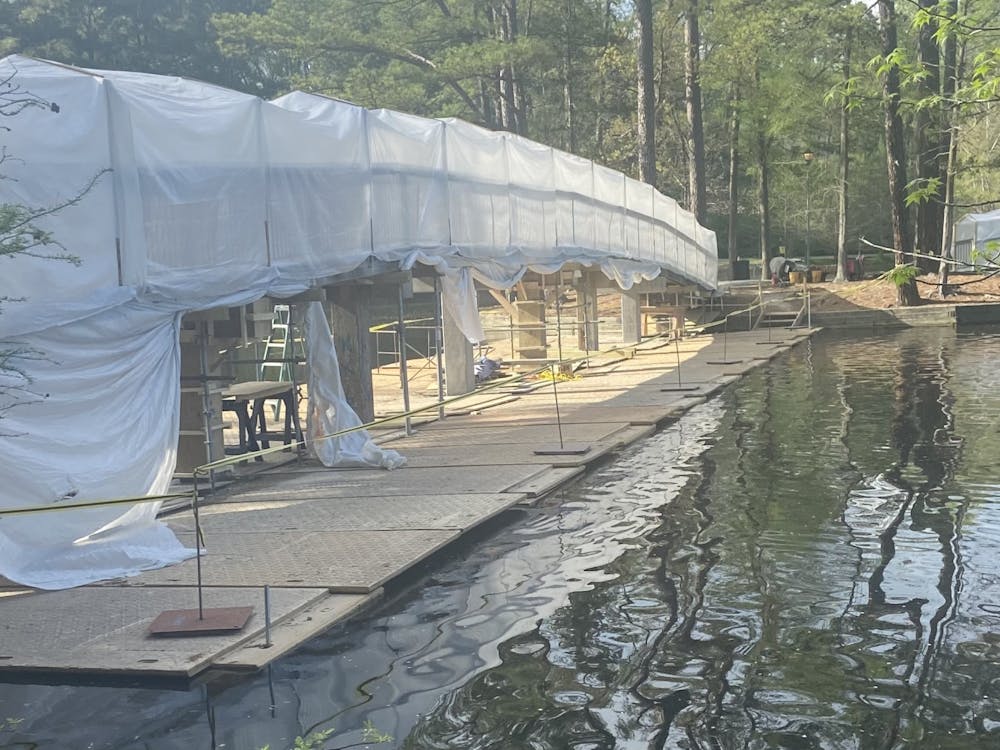WASHINGTON -- Richmond's major mass transit company is planning to eliminate the sole bus route between the university and downtown Richmond because too few passengers use the service.
The announcement about Greater Richmond Transit Company's plans comes on the heels of a school initiative that issued more than 150 employees free bus passes to commute to and from the university for work. A decision to cut the service would undoubtedly impact the 115 employees -- at least 36 of whom are in dining services -- and more students who rely on the bus for travel to and from work and community activities. If the city council approves GRTC's proposal, the changes would take effect Sept. 1.
In a July 18 e-mail to faculty, staff and students, President Edward Ayers said the administration had been working with city officials to resolve the problem.
"The university will continue to work with our GRTC partners to find ways to preserve this important bus route," Ayers wrote. "We have been working with city officials to reiterate the university's commitment to partnership with GRTC and to share our concerns about any proposals to eliminate Route 16."
GRTC recently concluded an 18-month analysis of its operations and determined seven routes were underperforming, including Route 16 between the university and downtown. Two opportunities for public comment are Tuesday and July 28 at city council meetings, when company officials will present their findings and propose cuts unless the council can scrounge up $400,000 to pay for the routes.
"The university won't stop functioning without the bus line," said Carl Sorensen, associate vice president for human resources at the university who is scheduled to speak on the university's behalf at the meetings. "But many people with good-paying jobs with benefits won't have it to get here, and international students without cars use it to get into town."
The 387-page GRTC report shows the route costs $912,300 to operate, but it gains only $149,100 in revenue -- a $763,200 deficit that puts the route about 40 percent worse than the average, or 18th out of 36. In several categories, the route was classified as a "problem," mainly because fares weren't contributing enough to assuage the route's overall operating cost.
Nearly all GRTC routes operate at a deficit and rely on public funding to sustain the company's $423 million budget. In April, the city council cut GRTC's funding, leading it to trim services rather than raise fares. A special session of the General Assembly called several weeks ago to address Virginia's strained transportation infrastructure ended in a virtual stalemate.
In an interview with The Collegian late Monday, GRTC chief executive officer John M. Lewis Jr. said the most vocal opposition to the cuts were coming from those who rode Route 16, many from university staff and students. Eliminating the seven routes was estimated to affect 250 people.
"Ridership is part of it," Lewis said of the route's problems. "But normally, if I wasn't in this budget situation, I would try to fiddle with [the route] and make it work for at least a few more months, or a year. We're operating lean, but because of the realities of the city council's budget in the spring, it forced my hand. It's not something I relish doing."
Between 14 and 18 percent more riders have rode express buses from Richmond's suburbs during the last few months, but ridership in the city has remained flat, attributable largely to rising food prices and other goods, Lewis said. Overall ridership was 880,000 in June, up 2 percent from a year ago. But although Lewis said he believed more riders had used Route 16 in recent months, even a 10 percent increase wouldn't be enough to justify keeping it.
The report recommended changes should the route remain in existence. The findings noted that buses on Route 16 exhibited poor on-time performance. It also suggested that one drop-off location on campus be specified instead of the two currently in use. The study found that the greatest number of passengers on the route disembarked the bus at the university.
Enjoy what you're reading?
Signup for our newsletter
University officials counter GRTC's case, saying the company is using data from the fall of 2006, a time long before gas prices made their summer surge above $4 a gallon and mass transit systems nationwide saw significant increases in the number of riders. Herb Peterson, the university's vice president for business and finance, stressed that more riders had been using the route since the university offered free bus passes several months ago. There were 1,893 rides in the month of June from the university.
Lewis said he had not met with university officials, who are asking GRTC to allow more time to study ridership characteristics. Sorensen, the HR director, will attend a meeting Tuesday of the city council's Land Use Committee. He said possible solutions could include working with GRTC to operate only during peak hours, but Lewis said it still wouldn't be feasible.
Before the announcement, university officials had discussed moving the bus stop to a central location on campus to more effectively serve riders. A proposal to offer students free bus passes was also being discussed, said John McCulla, the university's director of community relations.
"Conditions have changed with high fuel prices, the economy has taken a downswing, and the university has offered its own mass transit benefit [to employees]," McCulla said. "We had no knowledge they were considering cutting the line."
School officials were notified to possible cuts in an e-mail June 11. Peterson acknowledged that the university was preparing for the cancellation and would consider alternatives for employees, but said specific details of plans had not been discussed.
The full city council will vote on an ordinance July 28 that, if passed, would give GRTC the authority to cut certain routes, but would not require the action.
A reduction in service would also hinder students' abilities to travel to the university's soon-to-be-established pro bono office downtown and cause difficulties for a handful of inner-city students who commute to the university as part of a work program.
"I would love for the riders to convince the council members that public transit is worth investing in," Lewis said. "What we're seeing here is a microcosm of transportation problems -- the lack of investment in public transportation throughout the nation. People are looking for alternatives that just don't exist."
If diesel prices remain above $4 a gallon, Lewis said he would likely be forced to institute systemwide fare increases next year.
The route connects the University of Richmond to downtown via Grove Avenue, with stops at The Shops at Libbie & Grove, the Virginia Museum of Fine Arts, Retreat Hospital, Virginia Commonwealth University's West Campus and Grace Street.
Collegian staff writer Dan Petty reported this story from Washington, D.C.
Support independent student media
You can make a tax-deductible donation by clicking the button below, which takes you to our secure PayPal account. The page is set up to receive contributions in whatever amount you designate. We look forward to using the money we raise to further our mission of providing honest and accurate information to students, faculty, staff, alumni and others in the general public.
Donate Now


